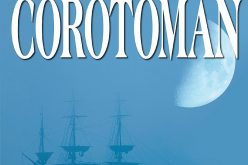Putting a face to the Green Party senate candidate
By Richard Davis
TFW Staff Writer
Chances are you didn’t even know there was a Green Party candidate for the U.S. Senate seat in Arkansas.
It’s no surprise. He’s older and less photogenic than his Democratic and Republican opponents. He doesn’t have a megabucks political donation machine to bankroll his campaign. Though lively and intelligent, John Gray isn’t the slick, 10-second sound bite automaton we’ve come to expect our politicians to be.
Voters tend to mentally check the box marked “Kook” when they see a third-party candidate’s name. Media outlets don’t want to cover candidates outside the mainstream, partly because of voter indifference, partly because those candidates usually don’t have money to spend on advertising, partly because it adds work to reporters and photographers who are already poorly paid and partly because the often bitter, disillusioned folks who staff newsrooms have had to deal too frequently with people who actually are kooks — such as a certain tree-climbing mushroom king.
But only somewhat jokingly, Gray thinks being more unknown might be a benefit and the very thing he credits with making him the current mayor in the city of Greenland.
“Somebody in the city told me, “Why are you doing this? Nobody knows who you are. You can’t get elected,” Gray said. “Actually I think that’s the thing that got me elected — they knew who the other guys were. When you think about it, there’s a lot of that in play in the senatorial election this year.”
Even debates are set up to keep the scene limited to the two big parties. Though he was invited to and participated in the debate aired on AETN, Gray was blocked from the debate between Democratic Sen. Blanche Lincoln and Republican candidate John Boozman in Hot Springs — even though that debate used state funds. Gray believes anyone who can jump through the hoops and make it onto the ballot in Arkansas should be heard from.
“Arkansans are smart people, and they have a right to hear everyone who’s made it on the ballot,” Gray said. “They don’t need some good ol’ boys in back rooms deciding who they need to listen to and who they don’t.”
One BIG Issue

(Photo: Courtesy John Gray) A shelter made of wooden pallets near an American plant in Mexico, according to Green Party candidate John Gray. Gray says free trade policies have led to situations such as this and have actually worsened the quality of life for Mexican and American workers.
Gray calls himself almost a one-trick pony. His one big thing? Free trade, which he describes as a monstrous outgrowth of trickle-down economics and the fiscal philosophies of Milton Friedman. And Gray believes his opponents are caught on that free trade hook.
“They have bought the Kool-Aid, and they have drunk deep of the Kool-Aid,” Gray said. “And they don’t seem to notice that the economic world is looking like Jonestown after they drank the Kool-Aid.”
The retired engineer’s stance on free trade came about from the work he used to do in manufacturing for companies looking to out-source to Mexico.
“I’ve been missing with it (free trade) since about 1985,” Gray said. “Because I speak Spanish, companies have used me to move their production lines to Mexico. The friends that I go back to visit annually, their lives are much worse off than before NAFTA (the North American Free Trade Agreement) came.”
Gray paints a very dour picture of what he believes free trade has brought to Mexico:
“There are no parking places — no cars. That’s because the girls that they hire to work in the plant are brought out in yellow school buses for each shift. They hire girls at 18-years-old and fire them at 25 if they’re married and 30 if they’re unmarried.”
And these workers aren’t making big bank on those jobs. His description paints a stereotypical picture of the exploitation of cheap labor.
“One of the things that I’ve found is that American companies in Mexico traditionally pay as close to Mexican minimum wage as they can using the same rationalization all the time: They don’t want to disturb the local economy and draw off all the good workers,” Gray said. “So to be a good citizen they have to pay as close to minimum wage as possible.
“Minimum wage in Mexico is 53 pesos a day. Fifty-three pesos a day for a 10-hour work day, works out at about 41 cents an hour. So the girls at this Whirlpool plant are making approximately 50 cents an hour. Now the people who they’re paying in Fort Smith $12 to $15 an hour, how can they compete with 50 cent labor? Especially since the stuff is being brought back up here and sold for full price.”
This leads to some unbelievably poor living conditions, Gray said, displaying photos of makeshift “houses” near the plants — little shelters built from pallets and other leftover materials. Shelters with no running water or toilet facilities, just latrines or holes dug in the ground.
“They can’t raise their standard of living or anything else,” he said. “It’s exploiting cheap labor.”
And the situation doesn’t lend itself to improvements, Gray said:
“The phenomenon I saw in the early plants I worked in there, we were paying minimum wage and when the workers tried to organize and get a little more money, they were systematically gotten rid of.
“It’s like my company said to me, and the reason I retired at 55 — I did not know I was retiring when I did this — they said, ‘You know, we like what you’ve been doing in Mexico. We have to pay those pesky Mexicans 43 cents an hour. We can get the same labor for 10 cents an hour in China. Why don’t you pack up for three years?’ I said, thanks but no thanks, I think I’ll go cool my heels a while.”
But doesn’t this low-cost labor benefit the average American consumer by making stuff cheaper to buy? Not so much, Gray said, noting the average reduction in the cost of goods in the U.S. only amounts to about 6 percent.
“Now if you’re one of the very wealthy that’s benefiting from it — the wage disparity between rich and poor is now greater than it’s ever been — we owe that to this free trade philosophy, mantra, whatever you want to call it — religion, I call it, because it’s faith without fact to base it on.,” Gray said. “If you look at all the facts, the facts will demonstrate quite clearly that it is not working for the working person at all.”
The Opposition
Gray isn’t delusional; he’s honest about his chances of winning and says he’s really just glad for the opportunity to get his message out. If he had to, Gray has no doubts on which of his opponents he’d vote for.
“Just meeting Blanche and Boozman, if somebody’s trying to decide between the two, there’s no choice as far as I’m concerned,” he said. “Blanche is head and shoulders above.”
The winner will come down to money, he said
“Whoever’s got the biggest bucket of money is going to win,” Gray said, noting at that time that Blanche had a couple million left in campaign funds while Boozman only had around $400,000. “I don’t care what his polls say. I think she’s going to swamp him.”
But is Gray worried he might have a Ralph Nader-like effect on the election? Nope.
“I disagree with her so much on free trade — this may sound awkward — but I do not think Boozman would be anywhere as effective as Blanche is at exporting our jobs and getting the agricultural subsidies she does. I don’t think he would be anywhere near as successful. That would cut down on the number of undocumented workers being forced to cross our borders looking for work to survive. So no, I don’t have any misgivings about accidentally costing her the election.”
As many people are, Gray is disappointed in the two major parties:
“I’ve been a Democrat for many years. I’ve been saddened to see over the last I don’t know how many years the Democratic party moving to the right and moving away from supporting the common working man and being more responsive to corporate needs, corporate interests.
“Most of them seem to be wholly owned subsidiaries of one sponsor or another. They really should wear NASCAR-style symbols on their suits.”






